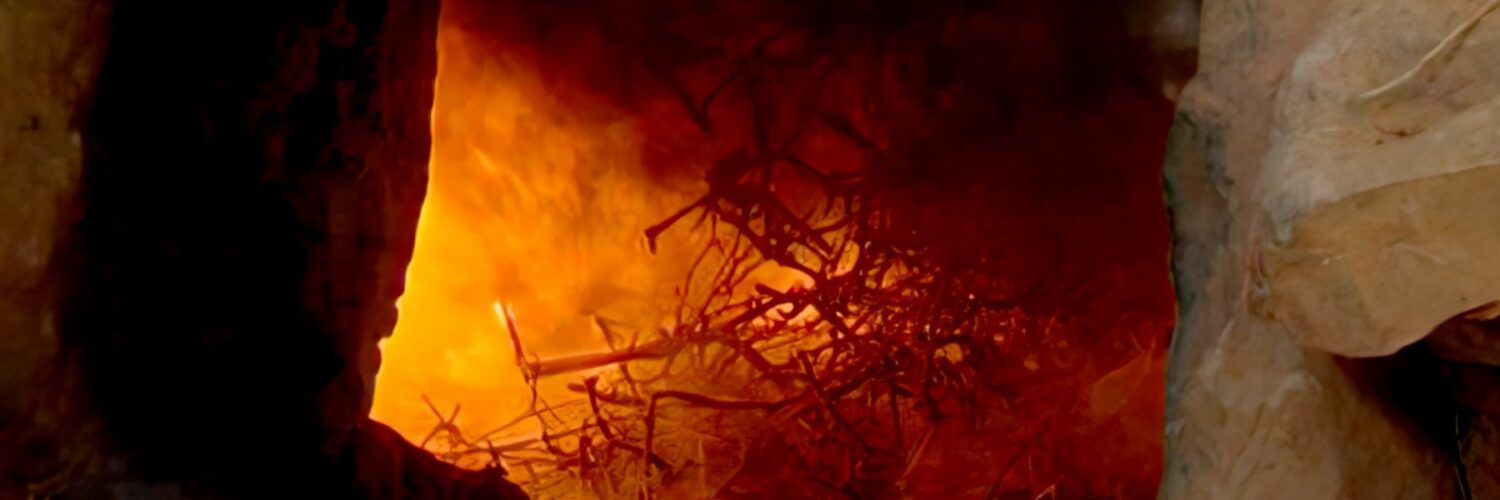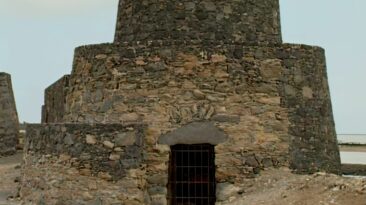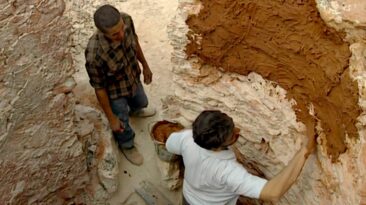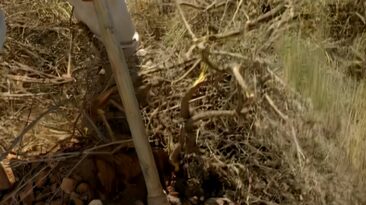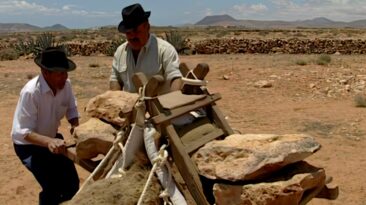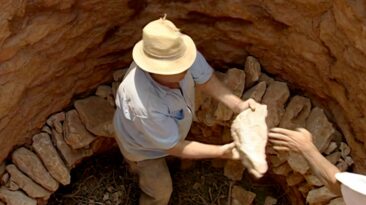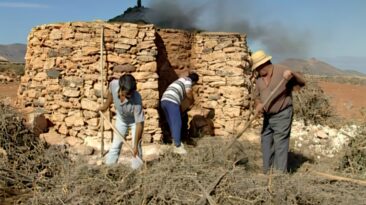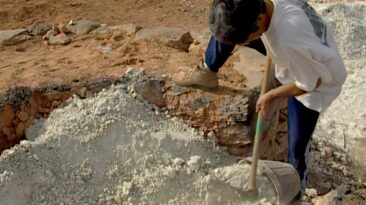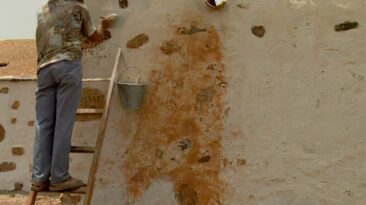The kiln is lit at dusk and kept burning continuously for 24 hours. This process is essential to reach the temperature required for the calcination of the stone (between 900 and 1000 degrees Celsius). During this time, the intensity of the flame is constantly monitored, and fuel (aulaga) is added every few minutes to keep the temperature stable. It is crucial to avoid the flame going out or the kiln overheating, as this could damage the kiln structure or cause uneven calcination of the stone.
You may also like
Lime production was a vital economic activity in Fuerteventura for much of the 20th century. At its peak in 1964, the island exported over 74,000 tons of lime, highlighting the scale of this industry. Lime was used in...
The production process begins with preparing the kiln, a domestic furnace divided into two sections: a lower chamber called the “hornilla,” where the fire is generated, and an upper section where the...
The fuel used in domestic kilns for lime production in Fuerteventura primarily comes from “aulaga” and other native plants. These plants, due to their abundance and ease of burning, are manually collected...
There are two main types of limestone on the island: “alveo” lime, of organic origin, formed by the cementation of skeletal remains and shells, and “cuchara” lime, resulting from the...
The process of loading the kiln is meticulous and requires experience. The stones are placed in layers, called “ruedos,” of increasing size, forming a false vault. This allows the fire to circulate evenly...
Calcination is the process by which limestone turns into quicklime. As the kiln reaches the ideal temperature, the stone undergoes a calcination process that lasts several hours. Flame control is essential to ensure...
Once calcination is complete, the kiln is left to cool for several days. This cooling process is crucial to avoid damage to the newly produced quicklime. The calcined stones are carefully removed from the kiln. Stones...
The lime produced is mainly used in the making of mortars, concretes, and exterior plasters, in addition to being a key material in hydraulic works such as cisterns and ponds. However, from the 1960s onwards, with the...


